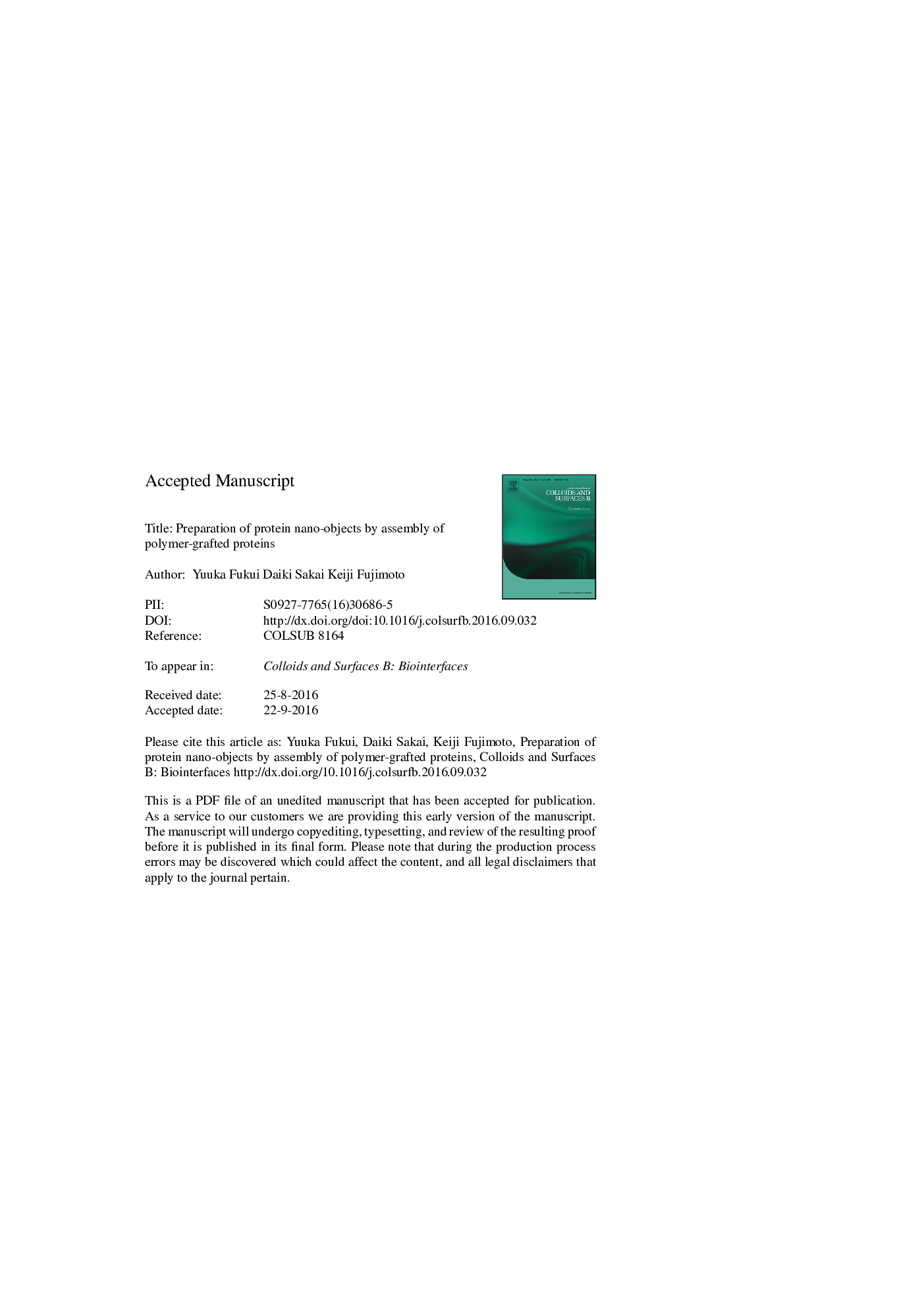| کد مقاله | کد نشریه | سال انتشار | مقاله انگلیسی | نسخه تمام متن |
|---|---|---|---|---|
| 4983523 | 1454256 | 2016 | 31 صفحه PDF | دانلود رایگان |
عنوان انگلیسی مقاله ISI
Preparation of protein nano-objects by assembly of polymer-grafted proteins
ترجمه فارسی عنوان
آماده سازی پروتئین نانو اشیاء با مونتاژ پروتئین های پلیمری پیوند شده
دانلود مقاله + سفارش ترجمه
دانلود مقاله ISI انگلیسی
رایگان برای ایرانیان
کلمات کلیدی
پروتئین، نانو اشیاء، پلیمر پیوند، بلوک کوپلیمر، خودمجموعه، پلیمریزاسیون رادیکال زنده،
موضوعات مرتبط
مهندسی و علوم پایه
مهندسی شیمی
شیمی کلوئیدی و سطحی
چکیده انگلیسی
We carried out surface-grafting from proteins and their assembling into objects with unique nanostructured materials (nano-objects). To immobilize polymer-initiating sites, amino groups of bovine serum albumin (BSA) were allowed to react with iniferter groups (BSA-i). Then, graft polymerization of N-isopropyl acrylamide (NIPAM) was performed by light-initiated living radical polymerization from immobilized iniferter moieties of BSA-i. The polymer-grafted BSA (BSA-g-PNIPAM) was assembled into nano-objects through the precipitation of PNIPAM graft chains and their sizes and morphologies were tuned by the chain length, the density and the chemical structure of graft polymers in addition to the environmental conditions such as temperature and pH. It was possible to retain the structures of nano-objects by thermal denaturation via heat treatment. Fluorescent substances were encapsulated in particulate nano-objects (nanoparticles) assembled from PNIPAM-g-BSA and their release could be regulated by tuning pH and temperature. Next, further graft polymerization from PNIPAM-grafted BSA was carried out by living radical polymerization of a cationic monomer, N,N-dimethylamino propyl acrylamide methyl chloride quaternary (DMAPAAQ). The grafted polymer was composed of a block copolymer of PNIPAM and a cationic polymer (PDMAPAAQ) and the gel-like nano-object was generated by increasing temperature. In contrast to PNIPAM-g-BSA, it became insoluble even when the temperature decreased, probably due to the electrostatic association between anionic regions of BSA and cationic regions of graft polymers. Coating of BSA-g-P(NIPAM-b-DMAPAAQ) enabled to form a uniform thin layer over a human hair. A free-standing membrane could be obtained by peeling from a water repellent substrate to create a porous membrane.
ناشر
Database: Elsevier - ScienceDirect (ساینس دایرکت)
Journal: Colloids and Surfaces B: Biointerfaces - Volume 148, 1 December 2016, Pages 503-510
Journal: Colloids and Surfaces B: Biointerfaces - Volume 148, 1 December 2016, Pages 503-510
نویسندگان
Yuuka Fukui, Daiki Sakai, Keiji Fujimoto,
